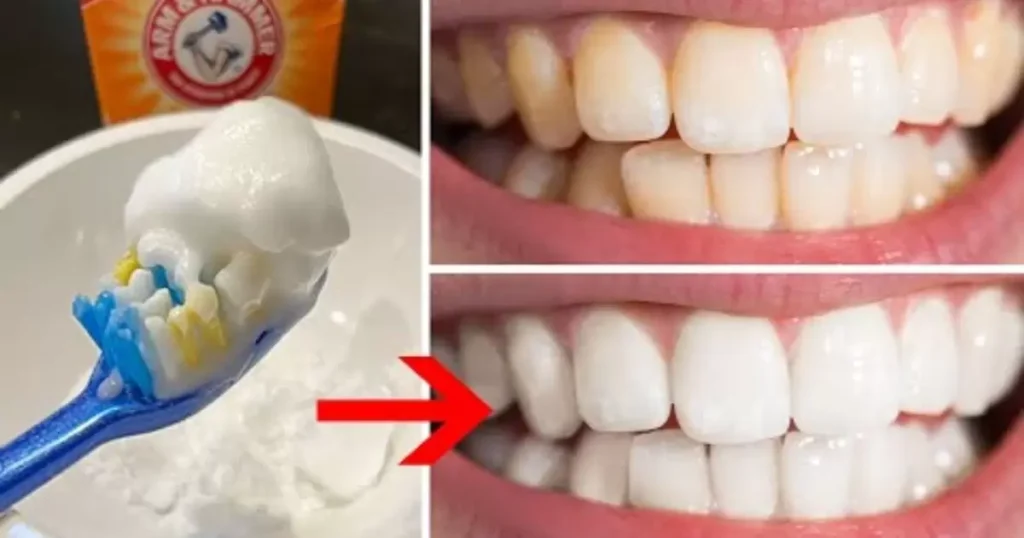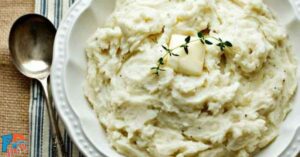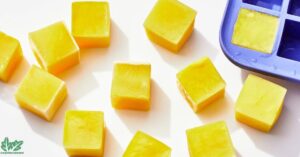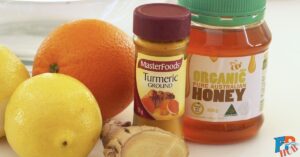A bright, white smile can boost confidence and make a great first impression. However, many commercial teeth whitening products contain harsh chemicals that can damage tooth enamel over time. Fortunately, there are several safe and natural approaches that can help remove stains and whiten your teeth effectively. From simple dietary changes to easy at-home remedies, these seven natural methods can gradually brighten your smile without harsh ingredients or expensive treatments. Whether you want to maintain your pearly whites or reverse yellowing from foods, drinks, or aging, these gentle yet powerful techniques can help you achieve a dazzling smile naturally.
Eat Strawberries

One of the most delicious ways to naturally whiten your teeth is by eating strawberries. These bright red berries contain malic acid, a natural astringent that helps remove discoloration and surface stains from tooth enamel.
Unlike your dog who might try to eat the strawberries whole, you can simply mash up a few ripe strawberries into a paste and use it as a tooth scrub, gently brushing it onto your teeth. Let it sit for about 5 minutes before rinsing thoroughly.
You can simply mash up a few ripe strawberries into a paste and use it as a tooth scrub, gently brushing it onto your teeth. Let it sit for about 5 minutes before rinsing thoroughly. The vitamin C in strawberries also has mild bleaching properties.
Eating strawberries regularly can have a gradual whitening effect over time. Plus, their high water content can help promote saliva production to rinse away food particles and bacteria that cause staining.
Eat Plenty of Fruits and Vegetables

Maintaining a diet rich in crunchy, fiber-filled fruits and vegetables can be highly beneficial for keeping your teeth bright and stain-free.
The abrasive texture of many crisp fruits and veggies actually helps to scrub away surface stains as you eat them. Apples, pears, carrots, and celery all make excellent natural tooth scrubbers.
Additionally, the abundance of water and vitamin C in these plant-based foods helps to flush out debris, while vitamin C has gentle whitening effects.
Antioxidants found in fruits and vegetables can also prevent and even reverse pigmentation caused by free radicals.
When adding more fruits and veggies to your diet for a whiter smile, make sure to focus on options that are:
• Crunchy and abrasive like apples, carrots, cauliflower, and bell peppers.
• High in vitamin C like citrus fruits, strawberries, tomatoes, and broccoli.
• Filled with antioxidants such as berries, leafy greens, beets, and pomegranates.
• Avoid them if they are potential staining culprits like beets, blueberries, or curry.
Brush After You Eat or Drink

One of the simplest and most effective ways to prevent stains and keep your teeth looking their whitest is to brush after every meal or beverage besides water.
Whenever we eat or drink anything other than plain water, residues get left behind on our teeth that can eventually lead to discoloration if not removed promptly.
The longer these residues linger, the more time they have to soak into the enamel and set stubborn stains.
By brushing right after consuming foods or drinks, you can scrub away debris before it has a chance to stain your teeth.
Make it a habit to always keep a soft-bristled toothbrush and travel-sized toothpaste on hand so you’re prepared to brush wherever you are after eating or drinking.
If you’re on the go without a toothbrush, swishing with water can still help dislodge some particles and prevent staining in the short term, until you’re able to properly brush later.
For best results, try to brush within 30 minutes after your last beverage or bite of food to maximize stain prevention.
This simple step makes a big difference in keeping your smile bright and stain-free between cleanings.
Rinse with Apple Cider Vinegar

Incorporating apple cider vinegar into your oral care routine can be a simple and effective way to achieve a brighter smile naturally.
Like crisp fruits and veggies, the mild acetic acid in apple cider vinegar acts as a gentle bleaching agent to dissolve stubborn stains and discoloration.
A quick rinse with a diluted apple cider vinegar solution can help lift surface stains from coffee, wine, or other foods while killing bacteria that cause plaque buildup and yellowing.
However, it’s important to use this remedy in moderation, as the acidic nature of vinegar can potentially erode tooth enamel with excessive or undiluted use over time.
Stick to rinsing just once or twice a week, and always dilute the vinegar in water to protect your enamel while still reaping its whitening benefits.
- Apple cider vinegar contains acetic acid, which is a mild natural bleaching agent
- The acidic nature of ACV helps break down and dissolve stains on tooth enamel
- Rinsing with ACV can remove buildup and discoloration from coffee, tea, wine, etc.
- It helps kill bacteria that cause plaque and yellowing of teeth
- The vinegar raises the pH in your mouth to prevent future staining
- ACV contains enzymes like pectin that absorb stain compounds
- Minerals in ACV, like potassium and magnesium, support enamel health
- It’s a gentle, inexpensive, and natural alternative to harsh whitening treatments
- Dilute 1-2 teaspoons of ACV in water for a mouth rinse once or twice a week
- Over time, rinsing with ACV can gradually whiten and brighten your smile
Apply Coconut Oil
Coconut oil has become a popular natural remedy for brightening smiles due to its unique abilities.
This plant-based oil has antibacterial and antimicrobial properties that help fight plaque and tooth decay.
When used in oil pulling, coconut oil can literally pull stains and discoloration out of the teeth and gums.
Oil Pulling
Swishing coconut oil around in your mouth effectively removes surface stains. It also helps eliminate bacteria and toxins that cause yellowing.
Remineralizing Enamel
Coconut oil contains minerals that can remineralize and strengthen enamel. This prevents future staining and discoloration of the teeth.
Gentle Abrasion
The oil itself has a mild abrasive quality that polishes away stains. Without being too harsh on the enamel like some whitening products.
Fresh Breath
Coconut oil has antimicrobial effects that destroy bad breath bacteria. Leaving your mouth feeling refreshed with a brighter, whiter smile.
Brush Your Tongue
While most teeth whitening tactics focus solely on the teeth themselves, brushing your tongue should not be overlooked.
Your tongue is a prime breeding ground for bacteria, food debris, and stain-causing compounds that can eventually transfer back onto your freshly cleaned teeth.
By gently brushing your tongue every time you brush your teeth, you can help remove these porous, colored substances before they have a chance to discolor your smile.
Using a soft-bristled toothbrush or a tongue scraper, simply brush from the back of your tongue forward to help dislodge any buildup.
This simple addition to your oral hygiene routine goes a long way in preventing future staining and yellowing of your pearly whites between cleanings.
Use Baking Soda and Hydrogen Peroxide

A classic home remedy for brightening smiles is making a paste out of baking soda and hydrogen peroxide. Baking soda is a mild abrasive that can help scrub away surface stains on teeth, while hydrogen peroxide acts as a gentle bleaching agent.
To use this whitening treatment, mix together a few teaspoons of baking soda with enough hydrogen peroxide to form a spreadable paste. Gently brush the mixture onto your teeth using a soft-bristled brush, letting it sit for a minute or two before thoroughly rinsing.
The combination works to lift discoloration and remove staining compounds for a polished, whiter look. However, it’s important not to overdo this method, as the abrasiveness of baking soda can potentially wear down enamel if used too frequently.
Limiting it to once a week or so allows you to reap its whitening benefits safely.
FAQ’s
How can I whiten my teeth naturally?
Brush with baking soda, use hydrogen peroxide rinses, or try oil pulling with coconut oil.
How can I whiten my teeth in 7 days?
Use baking soda and hydrogen peroxide paste, rinse with apple cider vinegar, and brush after eating.
What is the most powerful way to whiten teeth?
Professional bleaching treatments from a dentist provide the fastest and most dramatic whitening results.
How can I remove yellow teeth at home?
Try brushing with a baking soda paste, rinsing with diluted hydrogen peroxide, or using whitening strips.
Conclusion
While commercial whitening products promise fast results, going the natural route allows you to brighten your smile safely and affordably.
From dietary changes to simple at-home remedies, these seven natural whitening methods harness the stain-removing powers of ingredients like baking soda, hydrogen peroxide, apple cider vinegar, and coconut oil.
Eating crunchy fruits and vegetables scrubs away stains, while brushing immediately after meals prevents new discoloration from setting in.
Rinsing with acidic agents like vinegar or swishing with coconut oil helps dissolve stains and remove discolored bacteria. With regular use, these gentle yet effective techniques can gradually lift years of staining and yellowing to reveal a radiant white smile.
Best of all, they sidestep the potential enamel damage and sensitivity caused by harsh whitening strips and bleaching gels.
By embracing natural whiteners, you can maintain a luminous, bright smile through simple lifestyle adjustments that are easy on your teeth and wallet.











